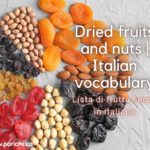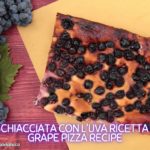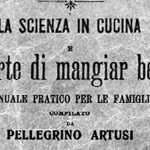(English follows)
Nell’incantevole città di Firenze, nell’italia del XVI secolo, viveva un talentuoso fornaio di nome Lapo. Era rinomato per il suo delizioso pane, le paste e tutti i suoi prodotti da forno che riempivano l’aria di aromi invitanti. Da ragazzo, Lapo aveva sempre amato cucinare insieme al padre, proprietario di un piccolo forno nel cuore di Firenze, e crescendo si appassionò sempre più all’arte della panificazione, sperimentando nuove ricette e tecniche.
Ma i fiorentini non sapevano che Lapo soffriva di una misteriosa malattia nota come celiachia. A quei tempi la conoscenza del glutine e dei suoi effetti sull’organismo era limitata e la condizione di Lapo veniva spesso sottovalutata dai suoi colleghi fornai. Il ventre gli faceva male e si gonfiava dopo aver consumato anche la più piccola quantità di grano, orzo o segale.
I sintomi della malattia tra cui febbri ed emicranie erano debilitanti, comunque nonostante le sue difficoltà, Lapo rifiutò di rinunciare alla sua passione per la panificazione. Sperimentò farine alternative, come il riso e la farina di granoturco, il miglio e la farina di ceci, tuttavia non avevano la stessa consistenza né il sapore del grano. I suoi genitori erano preoccupati per la sua salute e lo spingevano ad abbandonare il suo sogno di diventare fornaio. Malgrado ciò Lapo era determinato a seguire il suo sogno di diventare il miglior fornaio di Firenze.
Un giorno, mentre si cimentava con farine varie, Lapo scoprì che la farina di avena e la farina di grano saraceno non solo erano prive di glutine ma producevano anche un’ottima consistenza ed erano gustose.
Dopo mesi di tentativi ed errori, Lapo finalmente perfezionò le sue ricette utilizzando una combinazione di farine senza glutine. I suoi prodotti da forno erano deliziosi e sicuri da consumare. La notizia delle sue creazioni senza glutine si diffuse rapidamente in tutta Firenze e presto la gente si accalcò nel suo forno per assaggiare le sue prelibatezze.
I suoi pani, fragranti di erbe aromatiche, e decorati con motivi intricati, erano diversi da qualsiasi cosa mai assaggiata prima. L’inebriante profumo dei biscotti appena sfornati attirava anche i palati più esigenti.
Iniziò a fornire pane e maccheroni senza glutine a trattorie e conventi, contentando il crescente numero di persone con restrizioni dietetiche. I cittadini si meravigliarono del fatto che le creazioni di Lapo fossero non solo deliziose bensì soprattutto nutrienti per coloro che prima non avevano potuto godere di tali delizie. Infatti il grano saraceno e l’avena godevano di un eccellente profilo nutrizionale
Lapo si guadagnò la lode e l’ammirazione dello stesso Duca di Firenze che si accorse della sua ingegnosità e lo invitò a diventare il fornaio ufficiale della corte. Lapo era talmente grato dell’opportunità che lavorava instancabilmente per creare piatti senza glutine squisiti e unici per la corte reale. Le sue paste, tra cui i maccheroni e i vermicelli, venivano condite con uvette e il pane preparato con erbe odorifere e olive.
Siccome Lapo aveva un cuore grande, regalava ai poveri il pane che costituiva la base della loro dieta, e lo mangiavano semplicemente senza condimenti. Potevano contare sulla generosità di Lapo per avere pane ai loro funerali e ai loro matrimoni.
Con il passare degli anni il forno di Lapo divenne sinonimo di eccellenza e innovazione. Le sue creazioni erano ricercate da persone provenienti da tutta Italia, e la sua fama di maestro fornaio si diffuse in lungo e in largo persino in Europa. Nonostante le sfide che dovette affrontare a causa della celiachia, la passione di Lapo per la panificazione lo portò a creare qualcosa di veramente speciale, un’eredità che sarebbe stata ricordata dalle future generazioni di fornai che avrebbero seguito le sue orme.
E così questa storia serve a ricordarci che anche di fronte alle avversità, la determinazione e la creatività possono portare a risultati notevoli. Per Lapo, il fornaio celiaco del Rinascimento, la passione per la panificazione era diventata non solo una vocazione ma un modo per fare la differenza nella vita degli altri.
Racconto di Mirella Colalillo
Leggi il seguente articolo e scarica il PDF con il vocabolario dei cibi senza glutine:
Read the article above and download the PDF with the vocabulary of gluten-free foods
English version
In the enchanting city of Florence in 16th century Italy, there lived a talented baker named Lapo. He was renowned for his delicious breads, pastries and all his baked goods which filled the air with inviting aromas. As a boy, Lapo had always loved cooking together with his father, owner of a small bakery in the heart of Florence, and as he grew up he became increasingly passionate about the art of baking, experimenting with new recipes and techniques.
But the Florentines did not know that Lapo suffered from a mysterious disease known as celiac disease. At that time, knowledge of gluten and its effects on the body was limited and Lapo’s condition was often underestimated by his fellow bakers. His belly ached and bloated after consuming even the smallest amount of wheat, barley or rye.
The symptoms of the disease including fevers and migraines were debilitating, nonetheless despite his difficulties, Lapo refused to give up his passion for baking. He experimented with alternative flours, such as rice and corn flour, millet and chickpea flour, however they did not have the same consistency or flavor as wheat. His parents were worried about his health and urged him to abandon his dream of becoming a baker. Regardless of this Lapo was determined to follow his dream of becoming the best baker in Florence.
One day, while experimenting with various flours, Lapo discovered that oat flour and buckwheat flour were not only gluten-free but also produced an excellent texture and were tasty. After months of trial and error, Lapo finally perfected his recipes using a combination of gluten-free flours. His baked goods were delicious and safe to consume. News of his gluten-free creations quickly spread throughout Florence and soon people were flocking to his bakery to sample his delicacies.
His breads, fragrant with aromatic herbs, and decorated with intricate patterns, were unlike anything anyone had ever tasted before. The heady scent of freshly baked biscuits attracted even the most demanding palates.
He began supplying gluten-free bread and macaroni to trattorias and convents, catering to the growing number of people with dietary restrictions. The citizens were amazed at the fact that Lapo’s creations were not only delicious but above all nutritious for those who had not previously been able to enjoy such delights. In fact, buckwheat flour and oat flour provided an excellent nutritional profile
Lapo earned the praise and admiration of the Duke of Florence himself who noticed his ingenuity and invited him to become the official baker of the court. Lapo was so grateful for the opportunity that he worked tirelessly to create exquisite and unique gluten-free dishes for the royal court. His pastas including macaroni and vermicelli were seasoned with raisins and his breads prepared with odoriferous bulbs and olives.
Since Lapo had a big heart, he gave bread to the poor which was the basis of their diet, and they ate it simply without condiments. They could count on Lapo’s generosity to provide bread for their funerals and weddings.
Over the years, Lapo’s bakery became synonymous with excellence and innovation. His creations were sought after by people from all over Italy, and his fame as a master baker spread far and wide even into Europe. Despite the challenges he faced due to celiac disease, Lapo’s passion for bread making led him to create something truly special, a legacy that would be remembered by future generations of bakers who would follow in his footsteps.
And so this story serves to remind us that even in the face of adversity, determination and creativity can lead to remarkable results. For Lapo, the celiac baker of the Renaissance, the passion for baking had become not only a vocation but a way to make a difference in the lives of others.
Story by Mirella Colalillo
- 10 proverbi italiani di luglio

- Il fornaio celiaco del Rinascimento | Un racconto italiano

- I Vini italiani |Storia e Cultura

- How to say delicious in Italian – 16 words and phrases

- Top Italian articles of the year | Gli articoli migliori dell’anno

- Dried fruits and nuts | Italian vocabulary

- Schiacciata con l’uva ricetta- grape pizza recipe

- Don’t make these 8 Italian word mistakes

- Settimana della Cucina Italiana nel Mondo


